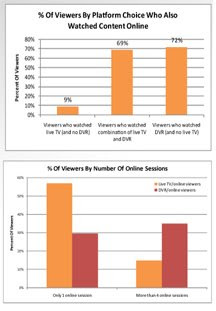
What's in a name? Everything, according to the National Pork Producers Council.
For the last few days, the National Pork Producers Council has been issuing news releases to remind consumers that "swine flu" does not come from pigs. At the same time, it is lobbying legislators and the media to refer to the virus with its less common scientific name, the "H1N1" virus.
According to AdAge, the industry made the decision because it feared uninformed consumers would avoid buying pork. But were these consumers really avoiding pork?
Not according to NewsChannel 10 in Amarillo, Texas, which spoke to butchers at the local level and WalMart on the national level. Not according to The Herald Bulletin, which reported from Anderson, Indiana.
In fact, not according to anyone until the National Pork Producers Council began distributing releases.
As of April 22, pork bellies had rallied and stabilized. While people were concerned about the flu, few seemed concerned about pork. But that changed when the National Pork Producers Council sent out a release on April 26, which was followed the next day by a flurry of stories about the release despite the fact that the media had never made a verbal connection between "swine flu" and pigs before.
By the end of the day, Smithfield Foods Inc., the largest pork processor, saw a 12 percent tumble (but many non-pork stocks did too). Since, the public relations nightmare for the pork industry has only gotten worse.
In fact, the more that the National Pork Producers Council talks about what it calls a real problem (one that didn't exist until it said there was a problem), it only gets worse. How bad? Take a look at a recent Q&A session with Chris Novak, National Pork Board CEO, on the Cattle Network.
During the session, the interviewer asks several times "How did those two words get connected?" Novak goes into detail saying "swine flu dates back to a 1918 influenza outbreak that affected both humans and swine. This virus, however, has not been identified in swine and has been spread through human-to-human transmissions, so the label applied in the media earlier this week created unnecessary confusion in the minds of many consumers."
So how did the terms get connected? You just read it! The National Pork Producers Council linked them!
According to the session, Novak says "that one estimate showing an 8 percent drop in futures prices since last Friday [last Friday was before the council's near daily releases began] has pushed losses for the swine production industry up to $6.5 million per day. The losses are real and personal for thousands of pork producers who have struggled with market losses over the past 18-20 months."
Fear is a terrible thing. It makes regular, ordinary people behave irrationally. And here, it seems that this fear wasn't a reality until the National Pork Producers Council overreacted to a linkage that didn't seem to exist before their communication.
Worse, the media, legislators, and public are now faced with their own communication problem in having to rename and rebrand what was known as "swine flu" with the clunky "H1N1" moniker. How likely will that be successful? Given that CBS just ran a story using the "H1N1" name but sporting a picture of pigs, we might say when those little guys start to fly.
Case study ahead.





















